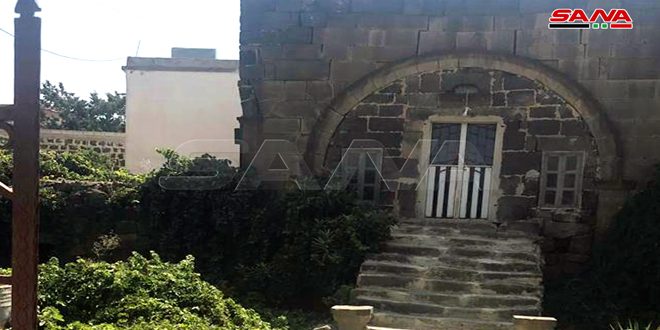Sweida, SANA – Um al-Zeitoun village in Sweida province has embraced a deep-rooted cultural heritage dating back to the 3rd century AD which is represented by a group of monuments dating back to the Nabataean, Roman, Byzantine, and Arabic-Islamic eras, the most famous of which is the building of “sacred Kalybe”.
The building of Sacred Kalybe as described by Head of Sweida Antiquities Department, Nashat Kiwan, is distinguished by its unique archeological design in the region.
Kiwan noted that Kalybe was mentioned by a French archeologist when he found a Greek inscription at the site on which it was written “Kalybe”, adding that such kind of temples used to be named Kalybe in the Greek reign, and it means a residence of goddess of springs and water as it was believed.
On the northern façade of the Kalybe building, there are two Greek inscriptions which refer to the time of its building in in the reign of “Augustus “in 282 AD.
The façade is 8 meter-long and 6 to7- meter high as its door is high and occupies the third of the façade and there are two niches for erecting the statues at them, while at the worshipping place inside it, the carries of the statues are fixed in the walls.
The Greek inscription indicates that “Kalybe” building is the house of weather goddess.
It is worth mentioning that Um al- Zeitoun village is located in the southeastern side of al-Lajat, about 4 km to northwest of ancient Shahba city, and 23 km from Sweida city and it is 900 meters above the sea level.
Hybah Sleman/ Ruaa al-Jazaeri
 Syrian Arab News Agency S A N A
Syrian Arab News Agency S A N A


